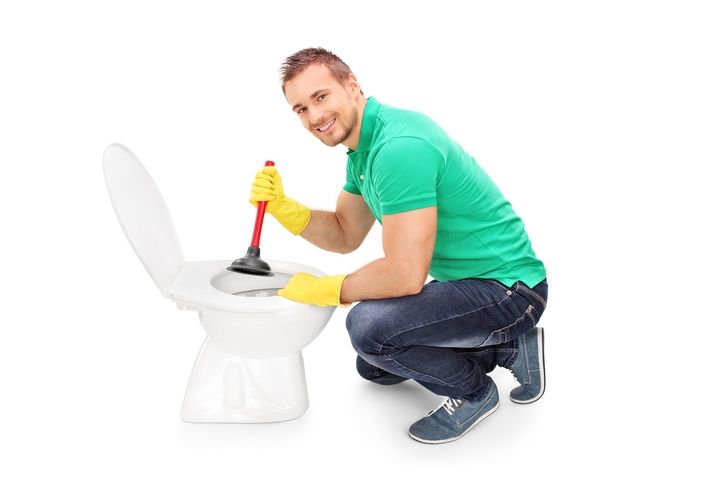Utilizing Plungers and Drain Cleaners: Top Practices
Utilizing Plungers and Drain Cleaners: Top Practices
Blog Article
Here on the next paragraphs you can get some professional data in relation to Tips on How to Effectively Use a Plunger.

Introduction
Proper maintenance of household drains pipes is essential for preventing obstructions and making certain smooth water circulation. One of the key tools in every home owner's toolkit is the bettor, together with various drainpipe cleaners designed to take on persistent clogs properly. This post discovers just how to make use of bettors and drain cleansers properly to keep your drains pipes moving openly.
Section 1: Understanding Bettors
Kinds of Plungers
There are several kinds of bettors available, each created for various types of drains and blocks. One of the most usual types include cup plungers, flange bettors, and accordion bettors.
Just How Plungers Job
Bettors work on the principle of creating pressure and suction to remove obstructions. When correctly applied over a drainpipe, they develop a vacuum cleaner that can take out debris or break up blockages.
Choosing the Right Plunger
Choosing the best plunger depends upon the kind of drain and the nature of the blockage. Mug bettors are suitable for sinks and bathtubs, while flange bettors are better suited for toilets due to their layout.
Usual Blunders with Bettors
Preventing these mistakes ensures reliable plunging: inappropriate seal around the drain, inadequate pressure, and unclear surrounding debris.
Section 2: Utilizing Plungers Effectively
Preparation
Prior to diving, guarantee the plunger covers the drainpipe entirely and creates a tight seal. Clear any kind of visible particles around the drain opening.
Method
Beginning with gentle diving activities to build suction. Boost stress gradually, utilizing a constant rhythm. Repeat as necessary up until the drainpipe gets rid of.
Troubleshooting Tips
If plunging doesn't work, attempt readjusting the seal, using petroleum jelly for a much better seal, or making use of a various sort of bettor.
Area 3: Recognizing Drainpipe Cleaning Company
Sorts Of Drain Cleaners
Drain cleaners can be chemical or enzymatic. Chemical cleaners utilize strong chemicals to dissolve blockages, while enzymatic cleaners utilize natural enzymes to break down organic matter.
How Drain Cleaners Job
Chemical cleansers respond with blockages to dissolve them, while enzymatic cleaners break down natural products like hair and grease without harming pipes.
Safety and security Factors to consider
Always wear handwear covers and eye defense when making use of chemical drain cleansers. Make certain ample ventilation and adhere to maker instructions very carefully.
Eco-Friendly Alternatives
Consider making use of vinegar and cooking soda or enzyme-based cleaners for eco-friendly options that are safer for pipes and the environment.
Section 4: Using Drainpipe Cleaning Company Properly
Application Strategies
Put chemical cleaners directly into the drainpipe opening. Permit them to help the recommended time before purging with hot water. Enzymatic cleansers must sit over night.
Safety measures
Avoid blending different types of cleansers, as this can produce poisonous fumes. Never use chemical cleansers in conjunction with a plunger, as splashing can take place.
Managing Stubborn Clogs
For relentless blockages, think about utilizing a plumbing snake or calling a professional plumber to stop damages to pipes.
Conclusion
In conclusion, recognizing just how to utilize plungers and drainpipe cleaners efficiently is important for keeping healthy and balanced pipes systems. By selecting the right tools and techniques, house owners can deal with small obstructions and stop significant plumbing problems down the line.
How To Properly Use A Plumbing Snake To Clear Drains
When any drain clogs in our home arise, we tend to gravitate toward the plunger and little else. In cases where the plunger and its vacuum-created pressure are not able to clear clogs, many immediately move to harmful chemicals or simply call their plumber to fix the issue.
we’re happy to help with all drain cleaning needs and concerns. This includes informing you on a few other home remedies you may have at your disposal for minor to moderate clogs, one of which is the use of a plumbing snake. Many people have never used one of these before – let’s go over the steps to take when your drain clogs and you have a plumbing snake available.
Attempt Plunger Use
The first step here, as we noted above, should indeed be to grab your plunger when you notice a drain clog and attempt to resolve it this way. If you’re unsure how to use a particular type of plunger, our plumbers can answer any questions you have. If this doesn’t do the trick, however, you move on to the snake.
Locate And Prepare Snake
A plumbing snake is a metal or plastic device that’s generally about a quarter of an inch thick. It’s design with significant extensions, meant to reach down into your clogged drain and push the clog out. Snakes also contain drain augers that will latch onto and push stubborn blockages.
If your plunger doesn’t clear a clog, locate your snake and bring it to the drain in question. We also recommend keeping a bucket nearby to collect the clog once you pull it out, plus we’d advise wearing goggles and possibly protective gloves.
Feed Snake
Once you’re ready to go, feed the snake slowly down the drain, using the crank device it comes with to keep it moving until it finds the clog. Once this happens, much of the clog will be latched onto the coil so you can pull it out, while the rest will simply break up and flow downward.
Detach Debris
Remove the snake slowly from the drain, and once you’ve done so, pick off any debris that’s stuck to the coil. This is another area where wearing gloves is a must.
Flush Drain
Finally, take a few minutes to ensure the snake has done its job correctly. If you’ve been using it on a toilet, flush the toilet a couple times and make sure everything flows well. If you’ve used it on a different drain, flush it with some room temperature water.
https://www.mybuddytheplumber.com/blog/how-to-properly-use-a-plumbing-snake-to-clear-drains/

Application Strategies
Put chemical cleaners directly into the drainpipe opening. Permit them to help the recommended time before purging with hot water. Enzymatic cleansers must sit over night.
Safety measures
Avoid blending different types of cleansers, as this can produce poisonous fumes. Never use chemical cleansers in conjunction with a plunger, as splashing can take place.
Managing Stubborn Clogs
For relentless blockages, think about utilizing a plumbing snake or calling a professional plumber to stop damages to pipes.
Conclusion
In conclusion, recognizing just how to utilize plungers and drainpipe cleaners efficiently is important for keeping healthy and balanced pipes systems. By selecting the right tools and techniques, house owners can deal with small obstructions and stop significant plumbing problems down the line.
How To Properly Use A Plumbing Snake To Clear Drains
When any drain clogs in our home arise, we tend to gravitate toward the plunger and little else. In cases where the plunger and its vacuum-created pressure are not able to clear clogs, many immediately move to harmful chemicals or simply call their plumber to fix the issue.
we’re happy to help with all drain cleaning needs and concerns. This includes informing you on a few other home remedies you may have at your disposal for minor to moderate clogs, one of which is the use of a plumbing snake. Many people have never used one of these before – let’s go over the steps to take when your drain clogs and you have a plumbing snake available.
Attempt Plunger Use
The first step here, as we noted above, should indeed be to grab your plunger when you notice a drain clog and attempt to resolve it this way. If you’re unsure how to use a particular type of plunger, our plumbers can answer any questions you have. If this doesn’t do the trick, however, you move on to the snake.
Locate And Prepare Snake
A plumbing snake is a metal or plastic device that’s generally about a quarter of an inch thick. It’s design with significant extensions, meant to reach down into your clogged drain and push the clog out. Snakes also contain drain augers that will latch onto and push stubborn blockages.
If your plunger doesn’t clear a clog, locate your snake and bring it to the drain in question. We also recommend keeping a bucket nearby to collect the clog once you pull it out, plus we’d advise wearing goggles and possibly protective gloves.
Feed Snake
Once you’re ready to go, feed the snake slowly down the drain, using the crank device it comes with to keep it moving until it finds the clog. Once this happens, much of the clog will be latched onto the coil so you can pull it out, while the rest will simply break up and flow downward.
Detach Debris
Remove the snake slowly from the drain, and once you’ve done so, pick off any debris that’s stuck to the coil. This is another area where wearing gloves is a must.
Flush Drain
Finally, take a few minutes to ensure the snake has done its job correctly. If you’ve been using it on a toilet, flush the toilet a couple times and make sure everything flows well. If you’ve used it on a different drain, flush it with some room temperature water.
https://www.mybuddytheplumber.com/blog/how-to-properly-use-a-plumbing-snake-to-clear-drains/

Do you really like reading about A Guide to Plungers (and How to Use Them)? Leave a remark directly below. We'd be glad to hear your thinking about this write up. In hopes that you visit us again soon. If you appreciated our article if you please do not forget to pass it around. I am grateful for your time. Revisit us soon.
Book Your Appointment Report this page